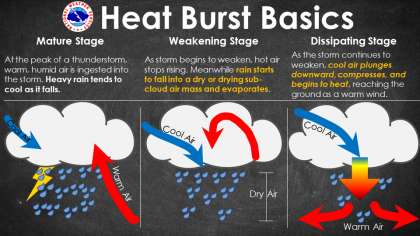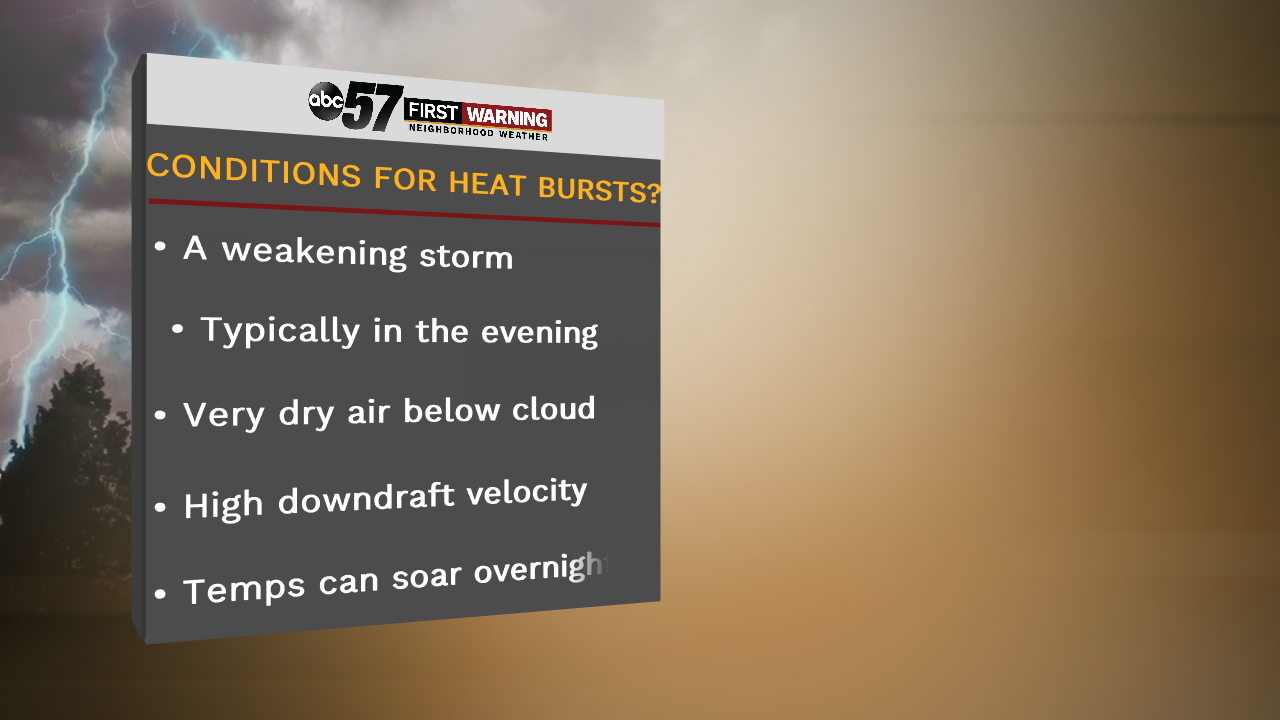Heat bursts are very rare, but they can be a surprising sight to anyone who experiences it. The process is similar to how a downburst or a microburst forms, and we've already seen that earlier this summer around the Niles area. What's unique about a heat burst is the fact that the air coming from the thunderstorm is warm and dry!
It all starts in a decaying thunderstorm. The downdraft carrying the rain showers, pushes towards the ground, thanks to the fact that it's much cooler and more dense than the environment around the thunderstorm. As the dense air falls towards the ground, it heats up and dries out, thanks to a process called compression. Once that dense air, now hot and dry, hits the ground, it fans out in all directions. Similar to a microburst.
Heat bursts themselves are very rare, so we need special conditions for ones to occur. First off, we need a decaying thunderstorm. Second, the starting point of the downdraft has to be fairly high up in the sky, allowing that cooler, denser air to really pick up speed as it moves toward the ground. Also, we need dry air just below the thunderstorm.
In some extreme cases, intense heat bursts have been known to suck all of the moisture out of vegetation!
















